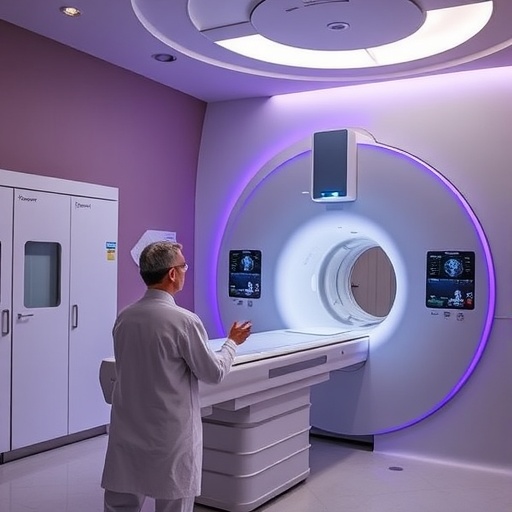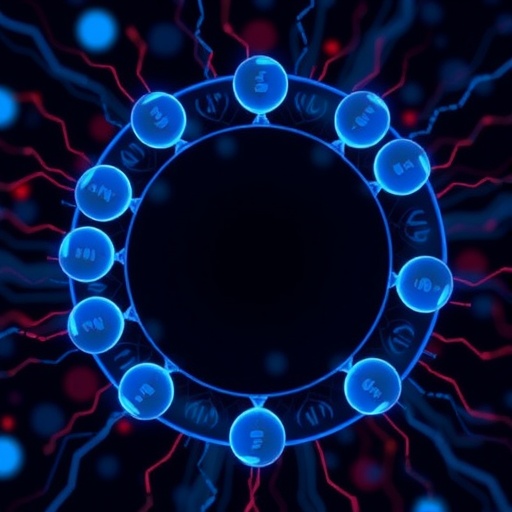In a compelling leap forward for nuclear medicine, a series of groundbreaking studies recently unveiled in The Journal of Nuclear Medicine signal transformative strides in the diagnosis and treatment of various cancer types. Published ahead of print, these research endeavors showcase the growing precision and effectiveness of molecular imaging and targeted therapies designed to tailor interventions to individual patient profiles. Through sophisticated radioimmunotherapy techniques, innovative imaging agents, and new interpretative standards, these findings underscore the rapidly evolving landscape of theranostics and personalized medical approaches.
One of the most promising advancements comes from researchers developing a three-step radioimmunotherapy regimen utilizing the alpha-emitting isotope Actinium-225 (^225Ac) aimed at HER2-positive breast cancer. This potent alpha emitter has delivered remarkable efficacy in preclinical models, achieving high cure rates while maintaining a low toxicity profile. The therapy’s design meticulously balances the aggressive destruction of cancerous cells with the preservation of healthy tissue, a feat achieved through precise dosing calibration and targeted delivery. This approach represents a significant milestone in alpha-particle therapy for solid tumors, where minimizing collateral damage has traditionally been a substantial challenge.
Parallel to these therapeutic breakthroughs, the field of cancer detection has seen notable progress with the introduction of a novel PET imaging agent, ^18F-CTT1057, specifically targeting the Prostate-Specific Membrane Antigen (PSMA). This radiotracer exhibits compelling diagnostic capabilities, demonstrating high sensitivity and specificity in clinical trials involving prostate cancer patients. Its robust performance, coupled with consistent inter-reader reliability and a favorable safety profile, positions ^18F-CTT1057 as a powerful tool for early and accurate prostate cancer detection. The agent’s ability to illuminate PSMA expression enables clinicians to identify malignant tissue with enhanced clarity, fostering more informed therapeutic decisions and potentially improved prognoses.
.adsslot_9PGqrwpMlv{ width:728px !important; height:90px !important; }
@media (max-width:1199px) { .adsslot_9PGqrwpMlv{ width:468px !important; height:60px !important; } }
@media (max-width:767px) { .adsslot_9PGqrwpMlv{ width:320px !important; height:50px !important; } }
ADVERTISEMENT
Recognizing the need for standardized evaluation in molecular imaging, a new interpretative framework named FAP-RADS version 1.0 has been introduced to harmonize the reading of Fibroblast Activation Protein (FAP)-targeted scans. This five-point scale is engineered to facilitate uniform assessment across various cancers and imaging modalities, thereby improving diagnostic consistency, clinical communication, and multicenter research collaboration. By codifying the interpretation of FAP expression—frequently elevated in tumor stroma—the system will streamline lesion evaluation, potentially accelerating the integration of FAP-targeted imaging agents into routine oncologic practice.
Another alfa therapy candidate gaining momentum is the novel ^225Ac-SibuDAB, evaluated in heavily pretreated prostate cancer cohorts. Early-phase data reveal encouraging antitumor activity, demonstrated by substantial declines in Prostate-Specific Antigen (PSA) levels and manageable adverse events. Notably, the rapid urinary clearance of its radioactive decay product Bismuth-213 (^213Bi) supports its safety profile by mitigating prolonged radiation exposure. These findings highlight the expanding therapeutic arsenal harnessing alpha emitters for precision oncology, especially in overcoming resistance in advanced disease states.
Complementing these targeted treatments, combined imaging modalities have refined the assessment of metastatic HER2-positive breast cancer. Utilizing simultaneous ^89Zr-trastuzumab PET imaging and diffusion-weighted Magnetic Resonance Imaging (MRI), researchers have enhanced tumor visualization and captured intratumoral heterogeneity with greater resolution than conventional biopsies allow. This integrative approach offers a noninvasive window into tumor biology and therapy responsiveness, enabling dynamic, longitudinal monitoring and more nuanced clinical decision-making.
Further enhancements in prostate cancer surveillance emerge from studies validating ^18F-CTT1057’s capacity to detect early biochemical recurrence at low PSA thresholds. Its superior sensitivity aids in accurate localization of recurrent disease, crucial for timely intervention and improved patient outcomes. This represents a significant step forward in post-treatment surveillance, where distinguishing true recurrence from stable residual disease has remained a clinical dilemma.
Innovations are not confined to oncology alone; therapeutic interventions in thyroid cancer are also evolving. Short-term targeted drug regimens have been shown to restore radioiodine uptake in patients with advanced thyroid carcinoma, reversing resistance mechanisms that reduce the efficacy of radioactive iodine therapy. A notably brief 10-day treatment course achieved such re-sensitization, suggesting that shorter duration regimens could confer the dual benefits of efficacy and reduced toxicity, thereby enhancing patient quality of life and compliance.
Collectively, these studies underline a concerted movement toward personalized medicine grounded in molecular precision. By refining the specificity of both therapeutic and diagnostic agents, and implementing standardized interpretative frameworks, the field is poised to deliver more effective, safer, and economically sustainable cancer care. The integration of alpha-emitting radionuclides and targeted molecular imaging heralds a new era in which treatment regimens are carefully calibrated not only to tumor type but also to individual patient biology and disease dynamics.
As this scientific frontier rapidly expands, the vital collaboration between molecular biologists, nuclear medicine specialists, radiochemists, and clinical oncologists becomes increasingly essential. The ongoing iterative improvements and clinical validations spotlighted in The Journal of Nuclear Medicine are charting a future where theranostics transition from promising concepts to standard-of-care modalities, reshaping cancer management paradigms globally.
For clinicians and researchers alike, these advancements provide an optimistic outlook and practical tools that promise to elevate precision oncology to unprecedented heights. By embracing these innovative therapies and imaging methods, the medical community is better equipped to confront the complexities of cancer, offering renewed hope to patients worldwide.
Subject of Research: Molecular Imaging and Targeted Therapies in Cancer
Article Title: Multiple Advances in Theranostics and Molecular Imaging Published Ahead of Print in The Journal of Nuclear Medicine
News Publication Date: June 6, 2025
Web References:
– https://doi.org/10.2967/jnumed.125.269601
– https://doi.org/10.2967/jnumed.124.269007
– https://doi.org/10.2967/jnumed.125.269914
– https://doi.org/10.2967/jnumed.124.269416
– https://doi.org/10.2967/jnumed.125.269655
– https://doi.org/10.2967/jnumed.124.268931
– https://doi.org/10.2967/jnumed.124.269266
– https://doi.org/10.2967/jnumed.125.270055
Keywords: Molecular Imaging, Positron Emission Tomography, Personalized Medicine, Targeted Alpha Therapy, Theranostics, Radioligand Therapy, Cancer Diagnostics
Tags: Actinium-225 alpha-emitting isotopecancer diagnosis and treatmentHER2-positive breast cancer therapymolecular imaging techniquesnuclear medicine advancementspersonalized medical approachesPET imaging agent innovationspreclinical cancer research findingsradioimmunotherapy developmentstargeted therapies for cancertheranostics in oncology





